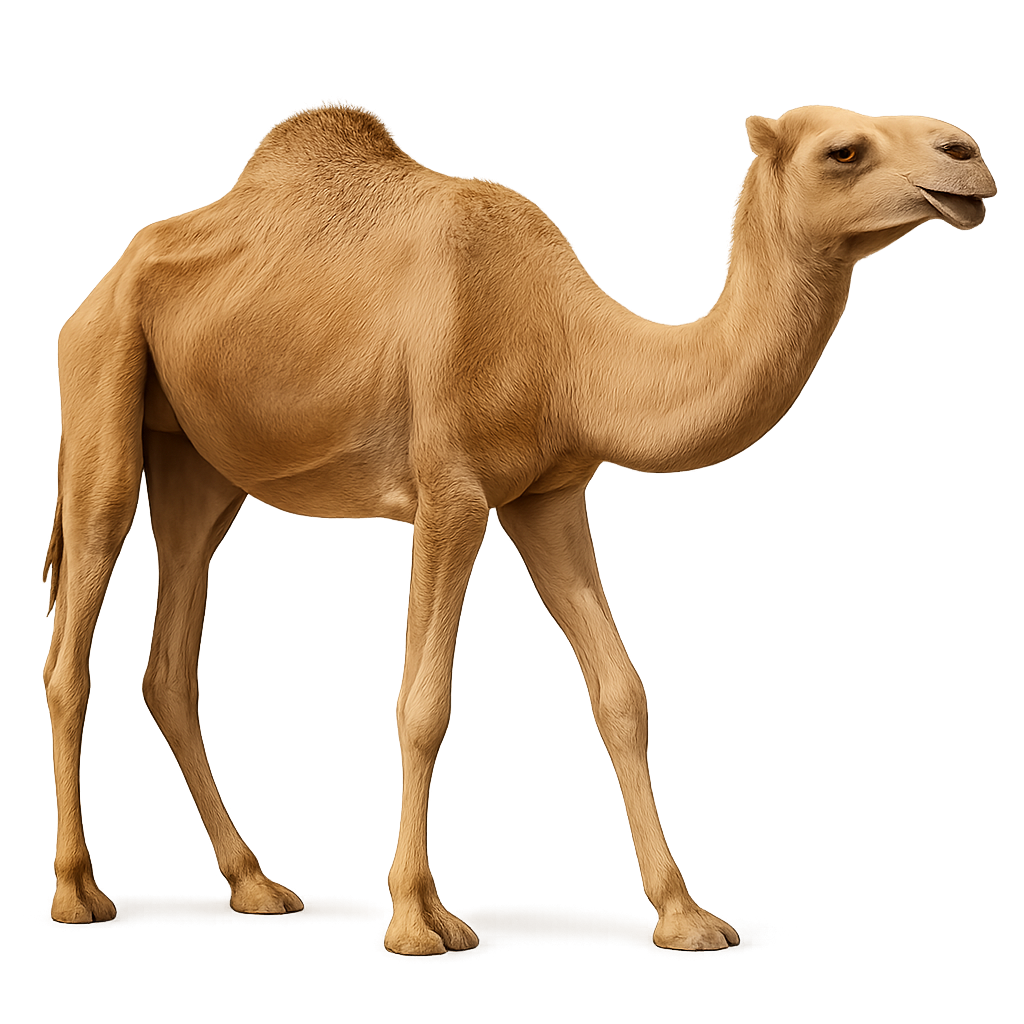Your wildlife photography guide.
Explore the dromedary in detail, study its behavior, prepare your shots.
Where to observe and photograph the dromedary in the wild
Learn where and when to spot the dromedary in the wild, how to identify the species based on distinctive features, and what natural environments it inhabits. The WildlifePhotographer app offers tailored photography tips that reflect the dromedary’s behavior, helping you capture better wildlife images. Explore the full species profile for key information including description, habitat, active periods, and approach techniques.
Dromedary
Scientific name: Camelus dromedarius

IUCN Status: Least Concern
Family: CAMELIDAE
Group: Mammals
Sensitivity to human approach: Not very shy
Minimum approach distance: 10 m
Rut period: December to February
Gestation: 390-410 jours
Births: January to March
Habitat:
Deserts, steppes, savannas
Activity period :
Primarily active during the day, with peak activity in the morning and late afternoon.
Identification and description:
The dromedary, Camelus dromedarius, is a large mammal with a single hump, well adapted to arid and desert environments. Originally from the Arabian Peninsula, it is now widely domesticated and used as a pack and transport animal in many regions of the Middle East and North Africa. Its hump, made of fat, allows it to survive long periods without water. The dromedary has a distinctive gait, moving at a steady pace over long distances. Its thick skin and closable nostrils protect it from sandstorms. Dromedaries are herbivores that primarily feed on dry and thorny vegetation.
Recommended lens:
400 mm – adjust based on distance, desired framing (portrait or habitat), and approach conditions.
Photography tips:
To photograph the dromedary, choose the golden hours of morning or evening for soft and flattering light. Use a telephoto lens of at least 400mm to capture details without disturbing the animal. Dromedaries often move in groups, providing interesting opportunities for dynamic compositions. Be patient and wait for them to adopt natural poses. Consider including the desert environment to give context to your images.
From knowledge to field practice
A species profile helps you understand an animal. In the field, the challenge is often different. Remembering your own observations.
The WildlifePhotographer app allows you to:
• record your personal observations
• note locations, dates, and behaviors
• revisit your field references over time
• build a private and long-term field logbook
The app does not provide observation locations.
It helps you organize what you actually observe, with respect for wildlife.

